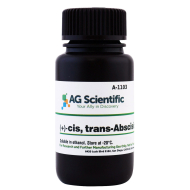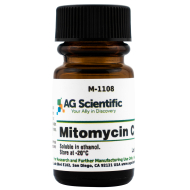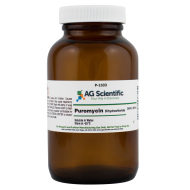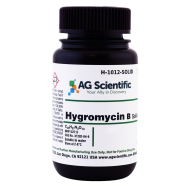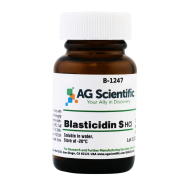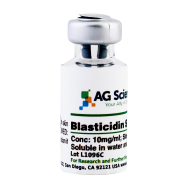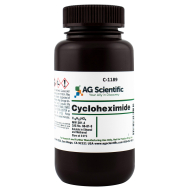Antibiotics (ex: Hygromycin, Blasticidin, Neomycin, Geneticin/G-418, Puromycin) abuse is creating a whole new generation of antibiotic-resistant bacteria. As the tolerance to antibiotics grow, so does the battle against bacteria. The struggle continues to become a public issue. Humans are not the only ones trying to fight bacteria, however. Some viruses, the phages, have been doing it for millennia.
 Antibiotics (ex: Hygromycin, Blasticidin, Neomycin, Geneticin/G-418, Puromycin) abuse is creating a whole new generation of antibiotic-resistant bacteria. As the tolerance to antibiotics grow, so does the battle against bacteria. The struggle continues to become a public issue. Humans are not the only ones trying to fight bacteria, however. Some viruses, the phages, have been doing it for millennia.
Since the GAIN Act, which was passed in 2012 to stimulate new antibiotic development, there has been an increasing interest in the field of antibiotics, but no game changers have emerged thus far. Antibiotic resistance continues to be a major problem. Few scientists believe they could have a far-reaching solution in the gene editing technology CRISPR Cas9, which allows them to tailor therapies to specific resistance mutations.
Antibiotics (ex: Hygromycin, Blasticidin, Neomycin, Geneticin/G-418, Puromycin) abuse is creating a whole new generation of antibiotic-resistant bacteria. As the tolerance to antibiotics grow, so does the battle against bacteria. The struggle continues to become a public issue. Humans are not the only ones trying to fight bacteria, however. Some viruses, the phages, have been doing it for millennia.
Since the GAIN Act, which was passed in 2012 to stimulate new antibiotic development, there has been an increasing interest in the field of antibiotics, but no game changers have emerged thus far. Antibiotic resistance continues to be a major problem. Few scientists believe they could have a far-reaching solution in the gene editing technology CRISPR Cas9, which allows them to tailor therapies to specific resistance mutations.
CRISPR Cas9: Where it Fits in the Big Picture
The teams, led by Luciano Marraffini at The Rockefeller University and Timothy Lu at the Massachusetts Institute of Technology (MIT), both employed the CRISPR (clustered, regularly interspaced short palindromic repeats) Cas9 system to produce programmable therapies of which targets antibiotic resistance genes directly, resulting in the use of bacteriophages to deliver a specific CRISPR Cas9 system into antibiotic-resistant bacteria. The antibiotic-resistant bacteria now sensitize the microbes to drugs. This is a modified version of phage therapy; utilizing the omnipresent CRISPR Cas9 tool to deliver a specific DNA sequence to the targeted bacteria. The DNA fragment encodes a programmable DNA nuclease that reverses antibiotic resistance by cleaving the genes that encode the specific antibiotics like Hygromycin, Blasticidin, Neomycin (G-418), Puromycin etc., ultimately eliminating the transfer of resistance between strains. The line of attack goes even further, thanks to the combination of CRISPR Cas9 delivery and lytic phage selection of antibiotic-sensitized bacteria. The programmed lytic phages are trained to attack only antibiotic-resistant bacteria while protecting antibiotic-sensitized microbes. It is crucial to add a selective pressure so that sensitive bacteria are favored over the resistant ones. The system, then, reduces the population of resistant bacteria, replacing antibiotic-resistant pathogens with sensitive ones that can easily be eliminated with traditional antibiotics.The figure above provides detailed information regarding the process:
- a(1): Antibiotic-sensitive bacteria can acquire resistance genes (R) from other bacteria that become chromosomally integrated, which causes the bacteria to become resistant to the antibiotic.
- b(1): Antibiotic-resistant bacteria can be selectively killed with a CRISPR Cas9 agent that targets the chromosomally integrated resistance gene. Delivery of a gene cassette encoding a small trans-activating CRISPR RNA (tracrRNA), Cas9 and a single guide RNA (sgRNA) (orange boxes) into the cell results in expression and assembly of the CRISPR Cas9 agent (yellow oval). This agent cleaves the targeted resistance gene, leading to chromosomal degradation and bacterial cell death.
- a(2): Antibiotic-sensitive bacteria can also acquire episomes encoding resistance genes from other bacteria (R) to become antibiotic resistant.
- b(2): These antibiotic-resistant bacteria can be selectively destroyed with a CRISPR Cas9 agent that specifically targets a resistance gene in the episome. Delivery of the appropriate gene cassette results in expression and assembly of a CRISP Cas9 agent that cleaves the episomal resistance gene, leading to episomal degradation and restoring antibiotic sensitivity to the bacterium.
Bacteria Continues to Resist
While promising, the approach does not address the development of antibiotic resistance. Lu noted that resensitizing drug-resistant bacteria is only a piece of the puzzle. The way I view it is not that we will be able to make an evolution-proof therapy, but that the genetic engineering tools will become more robust so that as evolution happens, we can rapidly develop countermeasures, Lu stated. It will be very hard to make evolution-proof therapy, there is just too much pressure for the bacteria to survive. Paradoxically, CRIPR Cas9 system is, in fact, part of the natural defenses of bacteria to fight foreign genetic elements such as plasmids and phages. The bacterial immune system has, in this case, backfired.Your Ally in Discovery
At AG Scientific, we have over 20 years of experience supplying critical chemical components to the life science industry. Contact us today to secure the highest quality raw materials with industry best prices and unrivaled customer service.ANTIBIOTICS E-BROCHURE: DOWNLOAD NOW
Below we have compiled a list of our most popular antibiotics. Don't see the product you're looking for online? Let us know and we'll find it! We exist to serve as Your Ally in Discovery.Additional Reading
- A Guide to the 8 Most Common Classes of Antibiotics
- What Can Be Done to Fight Antibiotic Resistance?
- Drug Resistant Pathogens: A Growing Problem
- Genome Engineering using CRISPR (Cas9)
